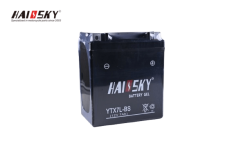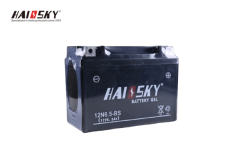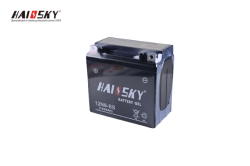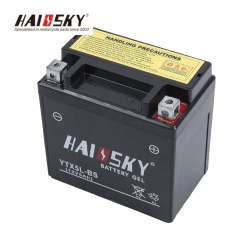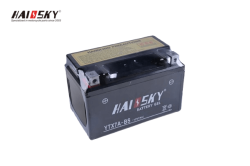OEM Motorcycle Parts
Category: Motorcycle Batteries - Lithium & AGM Options
The Ultimate Guide to Motorcycle Batteries: Everything You Need to Know
When it comes to keeping your motorcycle running smoothly, the motorcycle battery is one of the most critical components. It powers everything from the ignition system to the lights, ensuring your bike starts reliably and operates efficiently. For B2B wholesalers and motorcycle enthusiasts, understanding the ins and outs of motorcycle batteries is essential. In this guide, we’ll dive deep into their purpose, types, maintenance, and more, while optimizing for the keyword “motorcycle battery” to help you make informed decisions for your business or customers.
What is a Motorcycle Battery?
A motorcycle battery is a rechargeable power source that provides the electrical energy needed to start the engine and power the bike’s electrical systems. Unlike car batteries, motorcycle batteries are smaller, lighter, and designed to withstand the vibrations and demands of two-wheeled vehicles. They typically come in a 12-volt configuration, with capacities ranging from 4Ah to 20Ah, depending on the motorcycle’s size and electrical requirements.
Types of Motorcycle Batteries
Motorcycle batteries come in several types, each with its own advantages and disadvantages. Here’s a breakdown of the most common types:
1. Lead-Acid Batteries
Lead-acid batteries are the most traditional type of motorcycle battery. They are affordable, reliable, and provide high cranking power, making them a popular choice for many riders. However, they require regular maintenance, such as topping up with distilled water, and are heavier compared to other types.
2. AGM (Absorbed Glass Mat) Batteries
AGM batteries are a type of lead-acid battery that uses fiberglass mats to absorb the electrolyte, making them spill-proof and maintenance-free. They are more durable, have a longer lifespan, and can handle deep discharges better than traditional lead-acid batteries. AGM batteries are ideal for motorcycles with high electrical demands or those used in harsh conditions.
3. Gel Batteries
Gel batteries use a silica-based gel to immobilize the electrolyte, making them spill-proof and highly resistant to vibration. They are maintenance-free and have a longer lifespan than traditional lead-acid batteries. However, they are more sensitive to overcharging and require a specific type of charger.
4. Lithium-Ion Batteries
Lithium-ion batteries are the lightest and most advanced type of motorcycle battery. They offer high cranking power, fast charging, and a significantly longer lifespan compared to lead-acid batteries. While they are more expensive, their weight savings and performance benefits make them a popular choice for high-performance and racing motorcycles.
Will Any 12V Battery Work in a Motorcycle?
Not all 12V batteries are suitable for motorcycles. Motorcycle batteries are specifically designed to handle the vibrations, space constraints, and electrical demands of two-wheeled vehicles. Using a car battery or other incompatible 12V battery can lead to poor performance, damage to the electrical system, or even safety hazards. Always choose a battery that matches your motorcycle’s specifications.
What is the Difference Between a 12V Battery and a 12V AGM Battery?
The main difference lies in the construction and performance:
12V Lead-Acid Battery: Uses liquid electrolyte and requires regular maintenance. It’s heavier and less durable but more affordable.
12V AGM Battery: Uses absorbed glass mats to hold the electrolyte, making it spill-proof, maintenance-free, and more resistant to vibration. AGM batteries also have a longer lifespan and better performance in extreme conditions.
Can a Completely Dead Motorcycle Battery Be Recharged?
Yes, a completely dead motorcycle battery can often be recharged, but it depends on the type of battery and the extent of the damage. Here’s how to approach it:
Use a Smart Charger: A smart charger can detect the battery’s condition and apply the appropriate charging current.
Check for Damage: If the battery is swollen, cracked, or leaking, it’s best to replace it.
Test the Battery: After charging, use a multimeter to check the voltage. A healthy 12V battery should read around 12.6V to 12.8V when fully charged.
If the battery fails to hold a charge, it’s time for a replacement.
What Type of Battery is Best for a Motorcycle?
The best type of battery depends on your motorcycle’s requirements and your riding habits:
For Daily Commuters: AGM batteries are a great choice due to their durability and maintenance-free design.
For High-Performance Bikes: Lithium-ion batteries offer the best performance and weight savings.
For Budget-Conscious Riders: Traditional lead-acid batteries are affordable and reliable.
How Many Cranking Amps Should a Motorcycle Battery Have?
Cranking Amps (CA) and Cold Cranking Amps (CCA) indicate a battery’s ability to start the engine in cold conditions. For most motorcycles, a battery with 100 to 300 CCA is sufficient. However, high-performance bikes or those used in colder climates may require batteries with higher CCA ratings. Always refer to your motorcycle’s manual for the recommended specifications.
Is it OK to Use a Car Battery to Start a Motorcycle?
Using a car battery to start a motorcycle is not recommended. Car batteries are larger, heavier, and designed for different electrical demands. They may not fit in the battery compartment, and their higher capacity can overload the motorcycle’s electrical system. Always use a battery specifically designed for motorcycles.
Maintenance Tips for Motorcycle Batteries
To ensure your motorcycle battery lasts as long as possible, follow these maintenance tips:
Keep It Charged: Use a smart charger to maintain the battery’s charge, especially during long periods of inactivity.
Clean the Terminals: Regularly clean the battery terminals to prevent corrosion and ensure a good connection.
Check the Electrolyte Level: For lead-acid batteries, check the electrolyte level and top up with distilled water if necessary.
Store Properly: Store the battery in a cool, dry place and keep it charged during the off-season.
How to Choose the Right Motorcycle Battery
When selecting a motorcycle battery, consider the following factors:
Compatibility: Ensure the battery matches your motorcycle’s make, model, and electrical requirements.
Type: Choose between lead-acid, AGM, gel, or lithium-ion based on your needs and budget.
Cranking Amps: Select a battery with the appropriate CCA rating for your riding conditions.
Brand Reputation: Opt for trusted brands known for quality and reliability.
FAQs About Motorcycle Batteries
Q: How long does a motorcycle battery last?
A: The lifespan of a motorcycle battery depends on the type and usage. On average, lead-acid batteries last 3-5 years, while AGM and lithium-ion batteries can last 5-7 years or more.
Q: Can I jump-start a motorcycle with a car?
A: Yes, but use caution. Connect the jumper cables correctly and ensure the car is not running to avoid damaging the motorcycle’s electrical system.
Q: What’s the difference between CCA and CA?
A: CCA (Cold Cranking Amps) measures the battery’s ability to start the engine in cold temperatures, while CA (Cranking Amps) measures it at 32°F (0°C).
Final Thoughts
The motorcycle battery is a vital component that ensures your bike starts reliably and powers all its electrical systems. By understanding its purpose, types, and maintenance requirements, you can keep your customers’ motorcycles running smoothly. At Haissky.com, we offer a wide range of high-quality motorcycle batteries to meet the needs of B2B wholesalers and riders alike. Explore our catalog today and keep the engines roaring!


